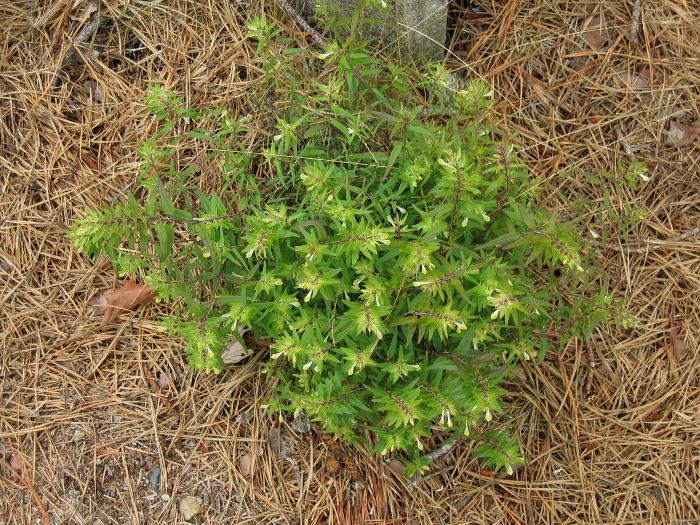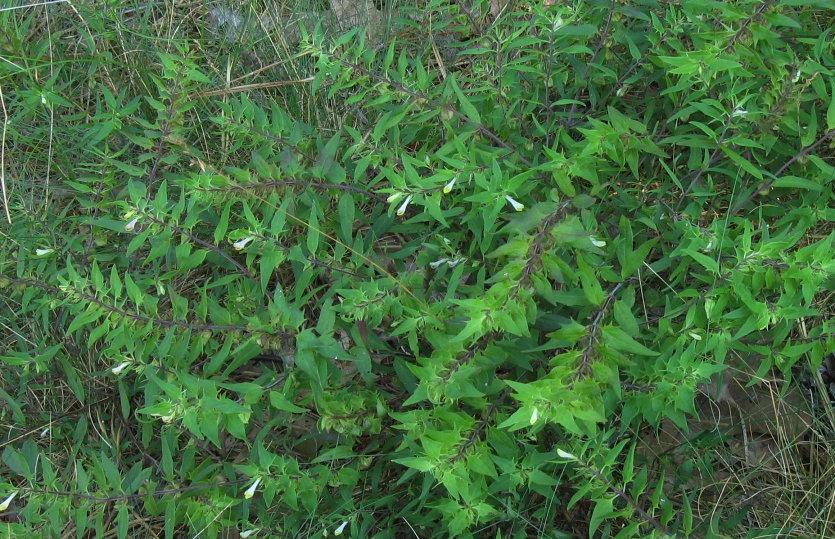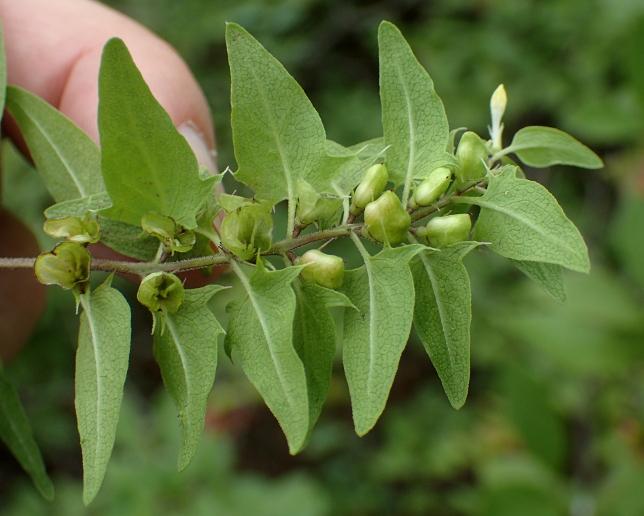Narrowleaf Cowwheat
Melampyrum lineare
This bushy annual features opposite branches, opposite entire leaves, which may have a few sharply pointed triangular teeth at base of blade,
and small tubular yellow-white flowers in pairs. It is found in southern Canada and northern US with a southward extension of its range down
the East Coast and throughout the Appalachians. Being not infrequent in pitch pine woodlands and barrens, it also occurs in other types
of forest with well-drained soil, such as mixed pine/northern hardwood forest, as well as on peat bogs in northern parts of its range.
The peculiar plant is hemiparasitic, that is, capable of making its own sugars but also augmenting its diet by stealing right
from roots of other plants! Its parasitism is obligate: without a host plant it cannot flower, neither produce fruits.
It can parasitize a wide range of woody plants from pines (including white and pitch pine), sugar maple, red oak, bigtooth aspen,
and trembling aspen, to lowbush blueberry. By stealing just a little from them, cowwheat does not inflict much harm.
Narrowleaf cowwheat as well as all the rest cowwheat (Melampyrum) species are mirmecochorous: their seeds are spread by ants.
As many other mirmecochorous plants, cowweat provides a special treat making its seeds attractive to ants—a tasty, starchy
appendage (elaiosome) attached to every seed.

July 15, Myles Standish State Forest, Plymouth

September 1, Myles Standish State Forest, Plymouth

Fruiting. View of underside. September 2, Myles Standish State Forest, Plymouth